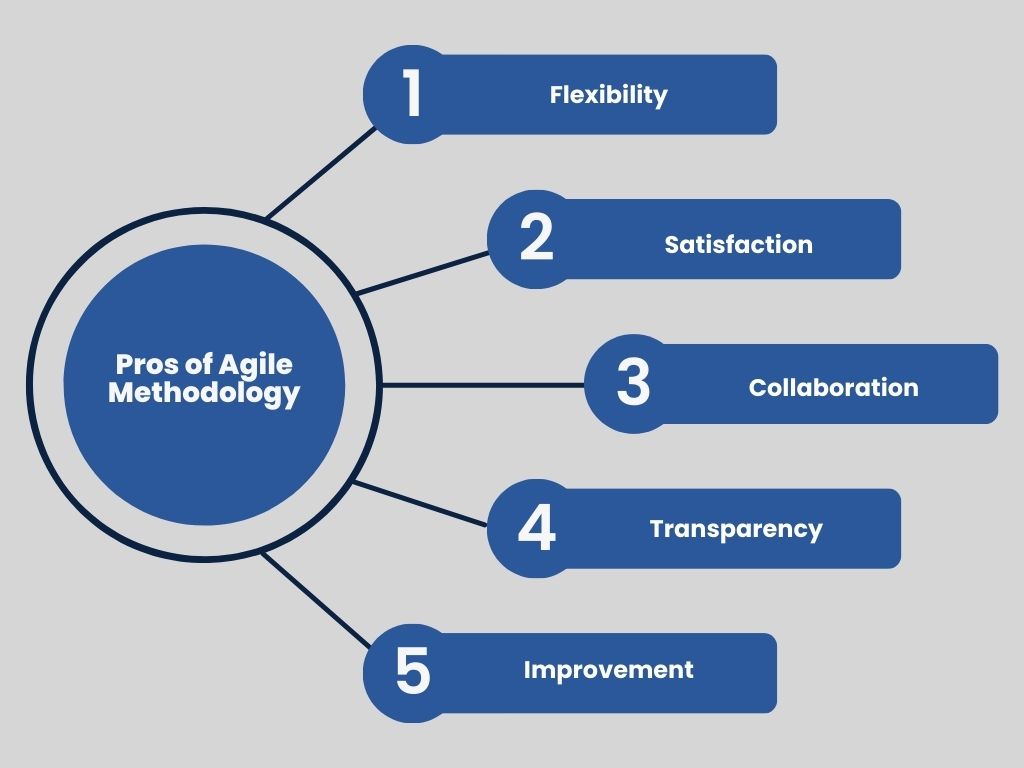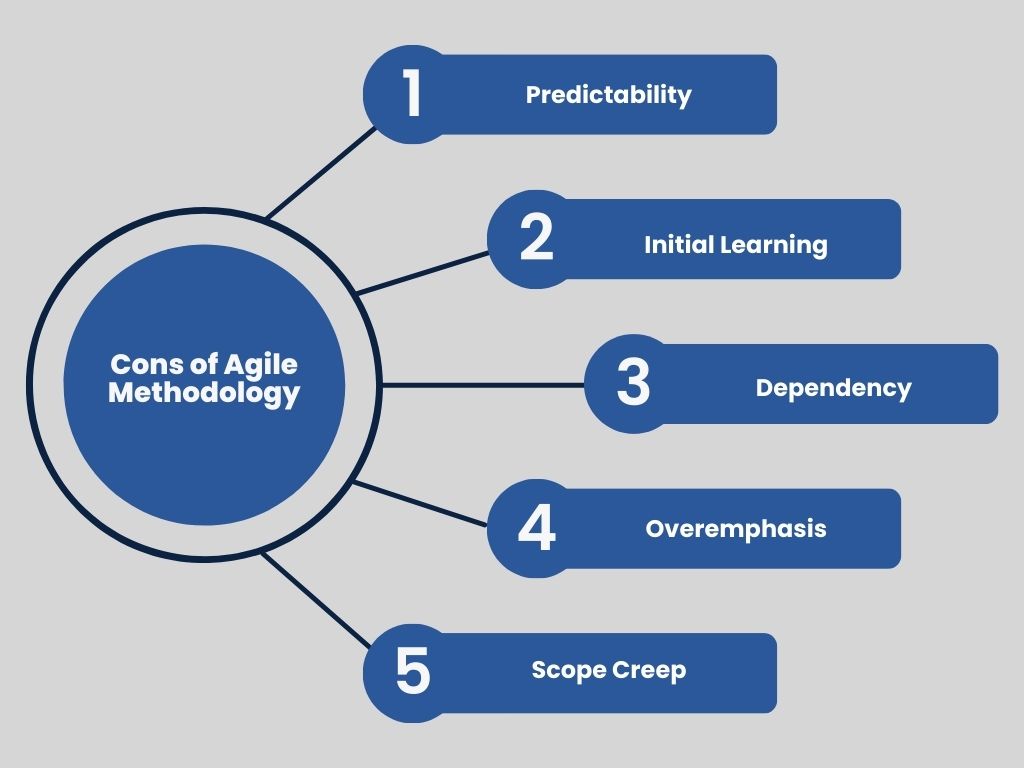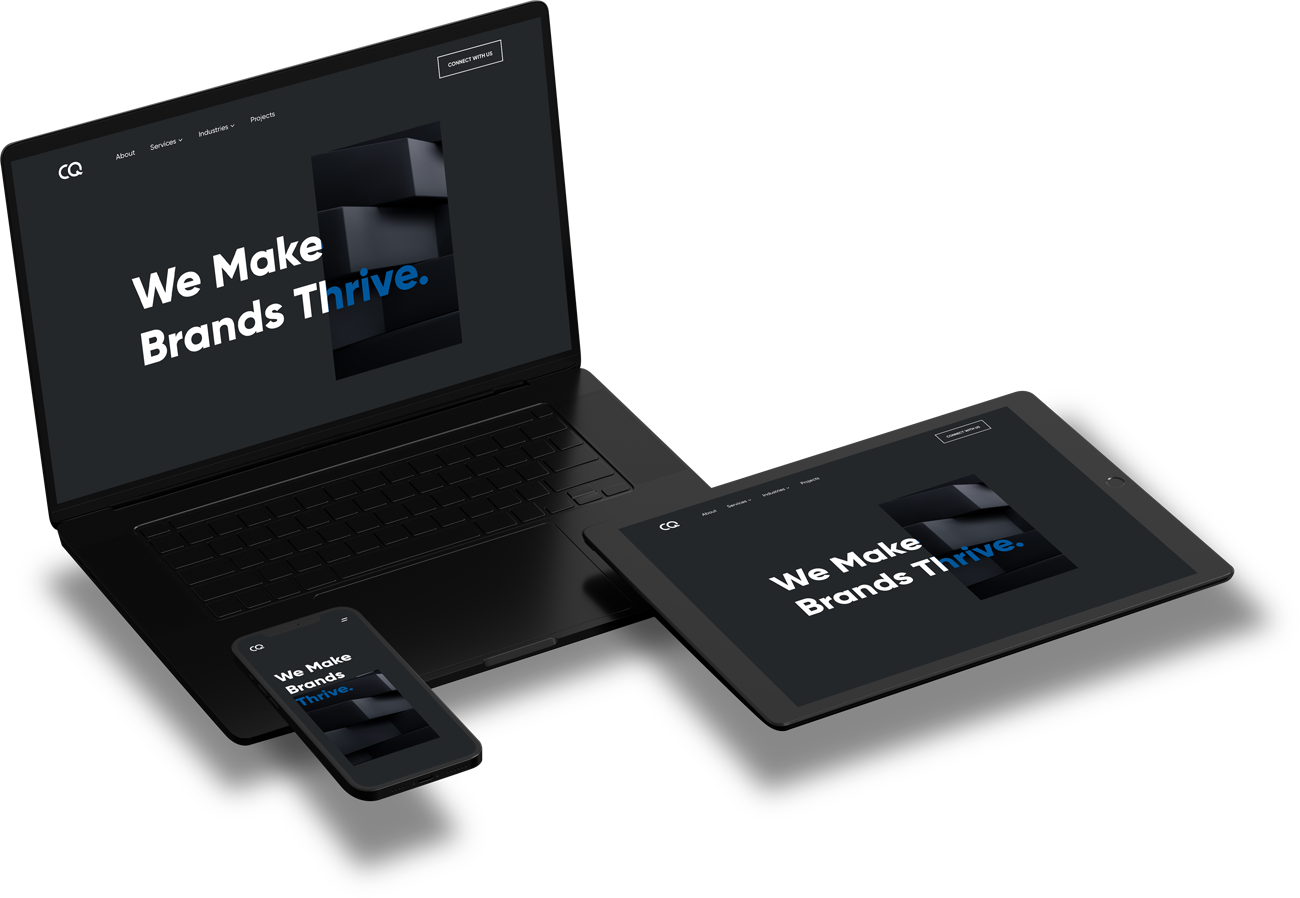 May 10, 2023
May 10, 2023

Of course, being agile is the key to success in today’s dynamic software product development market. But like anything else, there are pros and cons of agile methodology. This blog post is an all-encompassing guide to understanding the advantages and disadvantages of the agile method – the iterative way of project management in software development. We’ll help you determine whether Agile is the right fit for your team. And if it is, how should you implement it?
Agile methodology is a project management approach that emphasizes flexibility, collaboration, and rapid iteration. Unlike traditional project management approaches that follow a rigid plan, agile is all about staying nimble and focused on delivering value to customers as quickly as possible.
So, how does agile work?
When your team follows the agile way, they divide the project into short cycles called “sprints.” Each sprint typically lasts between 1 to 4 weeks, depending on the scope and complexity of the software product your team has to build.
At the beginning of each sprint, the team sets a list of goals they want to achieve. While at the end of it, they deliver a working product, mostly a minimum viable product that the stakeholders can evaluate and test. The stakeholders then provide feedback to the development team, which includes designers and developers, to improve the digital product.
But there is a catch! Teams requiring a fast-paced project completion and where stakeholders cannot determine the project scope from the beginning to find the agile approach best. However, it requires a great deal of skills, experience, and training to achieve this “agility” in work.
The pros and cons of agile methodology are nothing but a list of opportunities and challenges of implementing the “agile” way of product engineering and development. Let’s dive deeper!
The agile methodology makes your project team work like soldiers. They become more resilient, resourceful, and adaptable to changing situations.

Agile teams break down the project into smaller, manageable pieces called sprints. It helps them to get a clear view of what each team member needs to accomplish and when. As a result, tracking progress and prioritizing tasks becomes a breeze. Additionally, the project managers will have a clearer view of the project’s progress.
Agile teams become better at identifying potential issues in a software product early during development. The iterative development & testing process allows for quick adaptations to changing project requirements, making it easier to mitigate risks before they become significant challenges. It’s like a soldier anticipating their enemy’s next move and taking the necessary precautions.
With agile, the customer is not just a passive recipient of the final product. Instead, they actively participate in product development, providing feedback on each iteration, participating in meetings, and reviewing prototypes and demos.
In other words, agile teams engage customers in the entire decision-making process. By involving the customer in each step, the team can validate that the product is on the right track and encourage customer buy-in.
While the agile methodology has its direct pros, it’s important to note that it’s not a one-size-fits-all solution. In the next section, we’ll explore some potential downsides to adopting an agile approach.
As with any project management approach, there are potential downsides to adopting agile methodology. Here are some cons to keep in mind:

While involving the customer in the development process is a direct benefit of agile methodology, over-reliance on customer involvement can lead to scope creep and project delays. Therefore, the teams must find a middle ground between customer involvement and project timelines.
The agile software development teams must communicate clearly with the client and identify how much customer involvement is required. In a few cases, it may be necessary to limit customer involvement to avoid delays, while in others, the teams could require more customer input.
The agile methodology emphasizes the value of working software over comprehensive documentation. While this approach is more efficient for teams, there are some challenges too. For instance, limited documentation can make it difficult for new team members to understand the project’s background and progress. Furthermore, it may hinder external auditors from verifying compliance with relevant regulations or standards.
To solve this issue, agile teams use collaboration tools to track and communicate project progress. It will also create concise but sufficient documentation for the project.
Agile methodology requires a highly skilled and dedicated team. For smaller organizations with limited resources, this can become a constraint. However, there are ways to build a team capable of implementing agile methodology.
One approach is to invest in ongoing training and development for team members to ensure they have the necessary skills to work collaboratively and adapt quickly to changes. Additionally, organizations can consider hiring experienced agile consultants who can provide valuable guidance and support in implementing the methodology.
You must weigh the pros and cons of agile methodology carefully before deciding whether your team must follow it for their projects. Even more critical is to assess whether it fits your team and project needs. In the next section, we’ll provide valuable tips on finding the right project management approach for your team.
Finding the perfect approach for your team can be a daunting task, but fear not, we’re here to guide you through it! Here are some tips to help you find the right approach for your team:
Think about your team’s strengths and weaknesses, and what you want to achieve with your project. This will give you a better idea of whether a more flexible or rigid approach is the best fit for your team.
Does your project have a fixed budget and timeline, or do you need the flexibility to iterate and pivot based on customer feedback? If it’s the former, then the traditional waterfall model could be a better approach. On the other hand, agile works best where flexibility is needed.
Your team members are the ones who will be doing the heavy lifting, so it’s imperative to get their input and buy-in. Ask them about their past experiences with different project management approaches and what they think would work best for your current project.
Don’t be afraid to experiment and adapt. Finding the right approach may require some trial and error. Try different methods and adjust as necessary based on your team’s feedback and project needs. With a little experimentation and adaptation, you’ll find the perfect fit for your team and project!
To sum it up, there’s no one-size-fits-all strategy to project management. A careful examination at the pros and cons of agile methodology will help you understand which approach is best suited for your team. The key is to be open to experimentation.
We hope it has been helpful in your quest to find the right approach for your team. If you have any questions or want to learn more about how we can help you with your custom software needs, don’t hesitate to contact us at CraftedQ.
